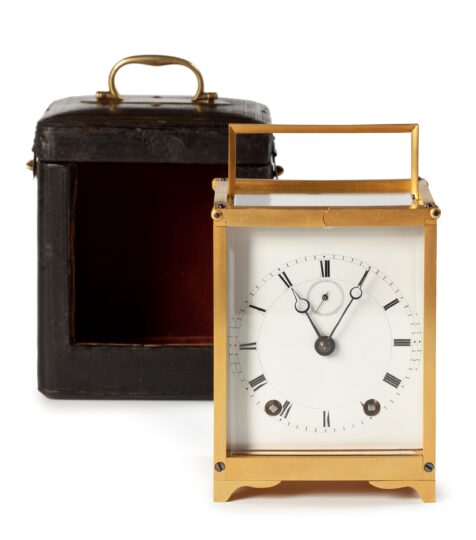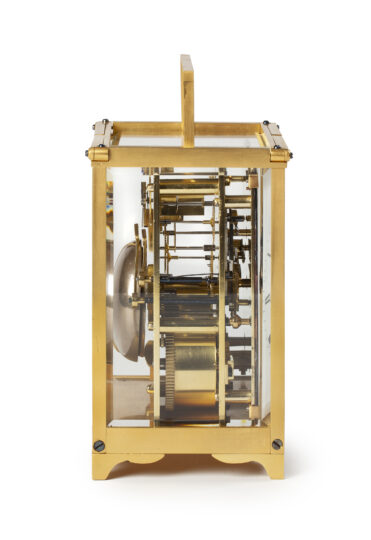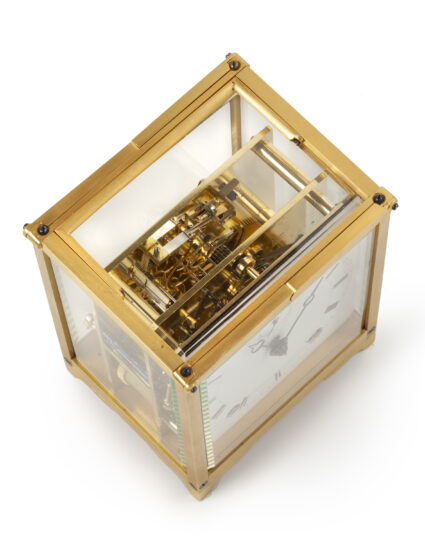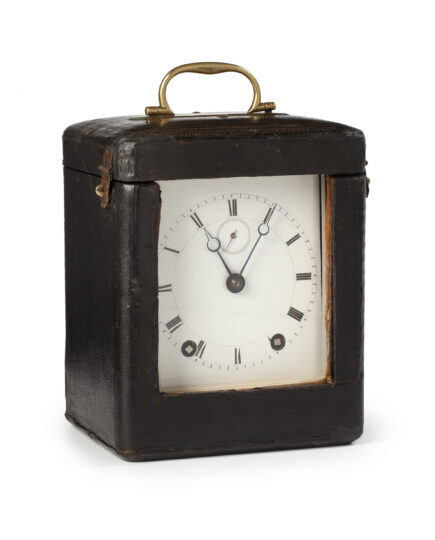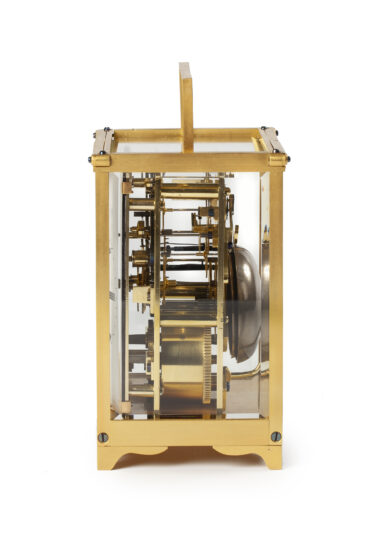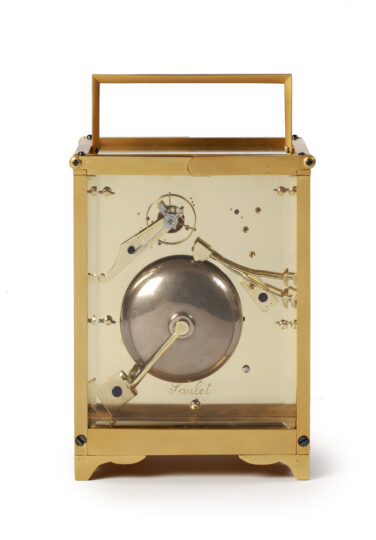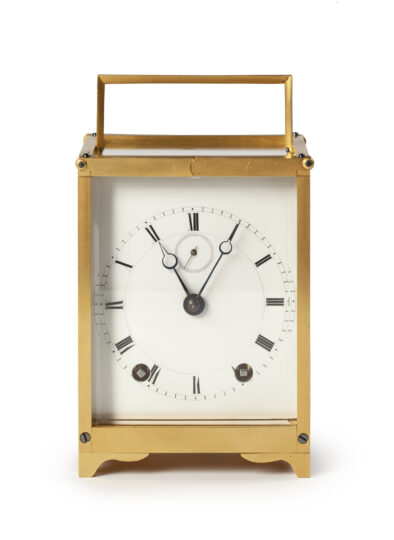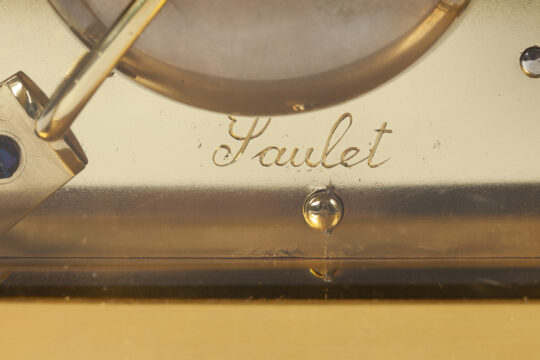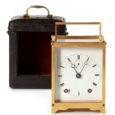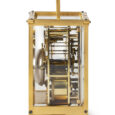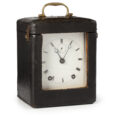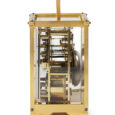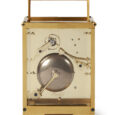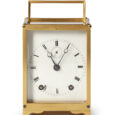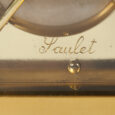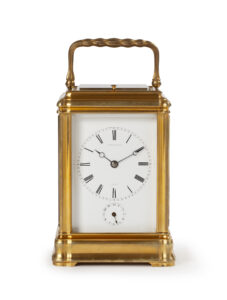CARRIAGE CLOCK WITH TRAVELLING CASE Saulet Ca. 1820 France
M&R114a
CARRIAGE CLOCK WITH TRAVELLING CASE
Signed: Saulet
Circa 1820
France
Movement
The clock has a spring-driven brass plated movement with an Earnshaw-chronometer escapement, balance and regulation. The striking train indicates the time according to the ‘petite-sonnerie’-system, i.e. the hours on a bell and each quarter only the quarters on two bells The back plate is signed Saulet.
Dial
The rectangular white enamelled dial has a large chapter ring with Roman hour numerals and minute indicators. The ‘Breguet’ hour and minute hands are made of blued steel. The small seconds chapter ring beneath the XII has also a steel hand. The winding holes for the going and striking trains are located near the V and the VII.
Case
The gilt-brass case has glass panels on each side. The carrying handle at the top of the can be hidden in the edge. Two strips can be folded upwards so that the glass front panel can be slid up. At the rear side the backplate with the balance and bells is visible.
Travelling case
The wooden travelling case, which protects the clock during transport, is covered on the outside with black leather. It can be opened with two clasps and the front can be slid out and can be stored in the case. A brass handles is fitted at the top.
Duration 1 week.
Height 15 cm
Width 11 cm
Depth 9 cm.
Travelling case
Height 19 cm
Width 13.5 cm
Depth 12 cm.
Literature
Tardy, Dictionnaire des Horlogers Français, (Paris, 1972) p. 586.
The maker
Saulet was working in Paris, Palais Royal, Galerie de Pierre 1820, de Valois 1840, Rue Richelieu 1850.

